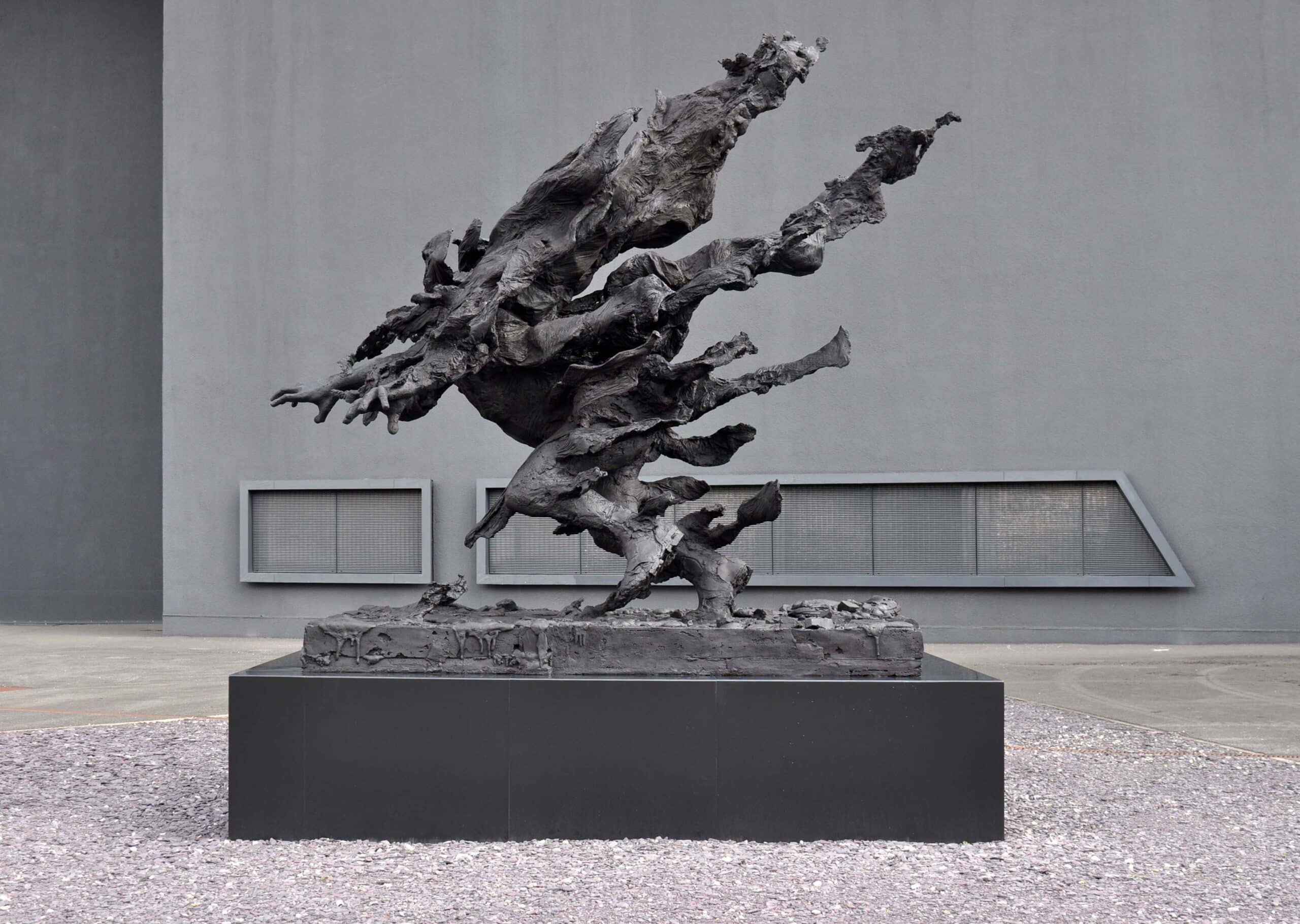
Man On Fire
Alone he stands, for the world to see. One man’s intense sculptural statement on the horror of war.
It always begins with an idea. A sketch on the back of an envelope, a maquette on a studio shelf, a conversation between an artist and a community. Public art is never just about the sculpture itself. It is about the people who will walk past it every day, the place it will inhabit and the story it will tell long after the scaffolding has gone.
At the foundry, we have been privileged to take those first sparks of imagination and see them through to the moment a crane lifts bronze into the air. That journey from commission to installation is a complicated one filled with paperwork, planning and problem solving. It is also one of the most rewarding parts of what we do.
Before a single mould is made, there are conversations. Artists, museums, councils, planning committees, architects and funders all have their say. Public art must meet many requirements, such as safety regulations and environmental considerations. There are even questions of how a new work might affect sight lines for traffic or security cameras. We are often invited into those early discussions to help shape how an artwork can live in its setting without losing its power.
With Man on Fire by Tim Shaw, now permanently installed outside the Imperial War Museum in Manchester, those conversations touched every part of the process. From the engineering hidden inside the figure to the design of the stainless-steel plinth that echoes the museum’s striking modern architecture. Questions arose constantly. Would the figure stand in bronze? Could the flames be supported without intruding on the form? Each answer came from a collaboration between the artist, foundry, museum, and engineers.
A sculpture does not simply sit on a base. It becomes part of a landscape, and the setting is as much a part of the work as the bronze itself.
For The Waiting, Anna Gillespie’s group of seven seated figures, the landscape was our own neighbourhood. The Jamaica Street plinth outside our workshop in Liverpool’s Baltic Triangle became their stage. Preparing that corner of the street began with securing the sculptures in place. It soon became a process of moving and rearranging the figures until the right rhythm emerged. The plinth became a focal point for the community and a place where conversations happened every day between residents, visitors and passers-by, for a temporary period.
Installation days are the culmination of months or sometimes years of preparation. Monumental sections arrive by lorry. Cranes rise above the site. Scaffolding and machinery surround the work. Every step is rehearsed and checked because public art must stand safely for generations.
In the case of Man on Fire, the technical challenges were immense. Reinforcements of stainless steel were hidden inside the form to carry the weight of the two-tonne figure as it leans forward, arms outstretched and engulfed in flame. Fixings were crafted but never seen, welded solid inside the bronze. The dynamic pose depends entirely on this invisible engineering. Without it, the work could never stand.
Public art belongs to everyone. The moment when a sculpture is revealed, and people encounter it for the first time, is when the real story begins.
When The Waiting was unveiled, the response from our neighbours was immediate. Locals stopped to comment. The tyre depot across the road became unofficial guardians of the work. Children pointed and asked questions. Every six months, the plinth changes, and each new work becomes part of the street’s evolving story. There is a sense of ownership and pride that goes far beyond bricks and mortar.
When the straps are released and the bronze stands alone, there is always a silence. The artist sees their work in its true home. The planners see a commission delivered. The public sees something new, woven into their landscape. For us at the foundry, it marks the end of a long journey and the beginning of a new life for the sculpture.
Public art is never just the act of casting bronze. It is collaboration, compromise and craft. Above all, it is a gift to a place and to the people who make it their own. That is why we do what we do.

Although Man on Fire is shaped by the well known images of soldiers diving from the armoured vehicle -it’s important to note the work itself represents not just those caught in the theatre of war- it’s about everyman, woman and child caught between warring factions.
In Tim’s words…
Man On Fire - Tim Shaw
At Castle Fine Arts Foundry, we are more than just a foundry; we are your partner in bringing your artistic vision to life.
From concept to completion, we guide you through each step, ensuring a flawless process and an exceptional final result.

Alone he stands, for the world to see. One man’s intense sculptural statement on the horror of war.